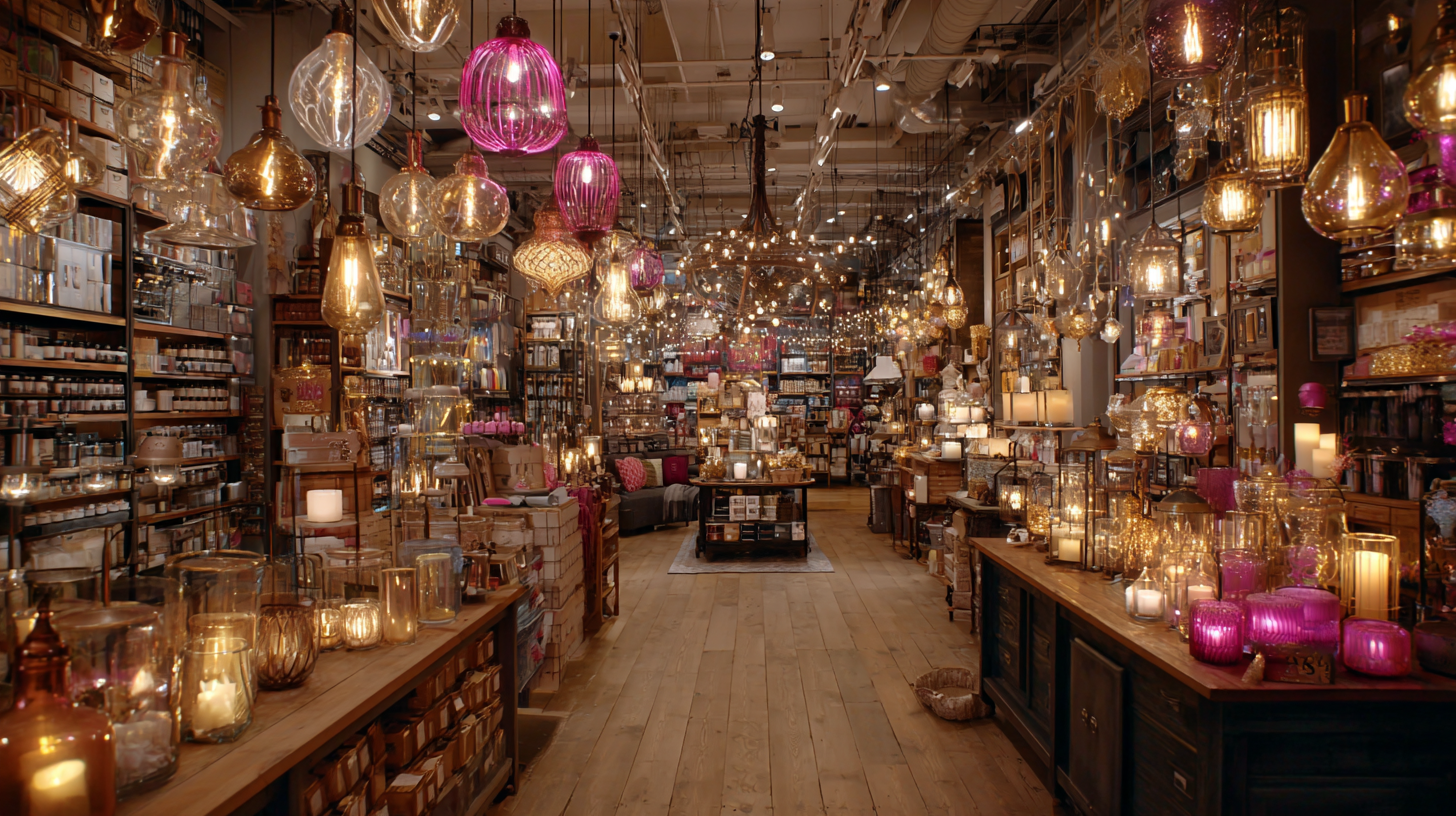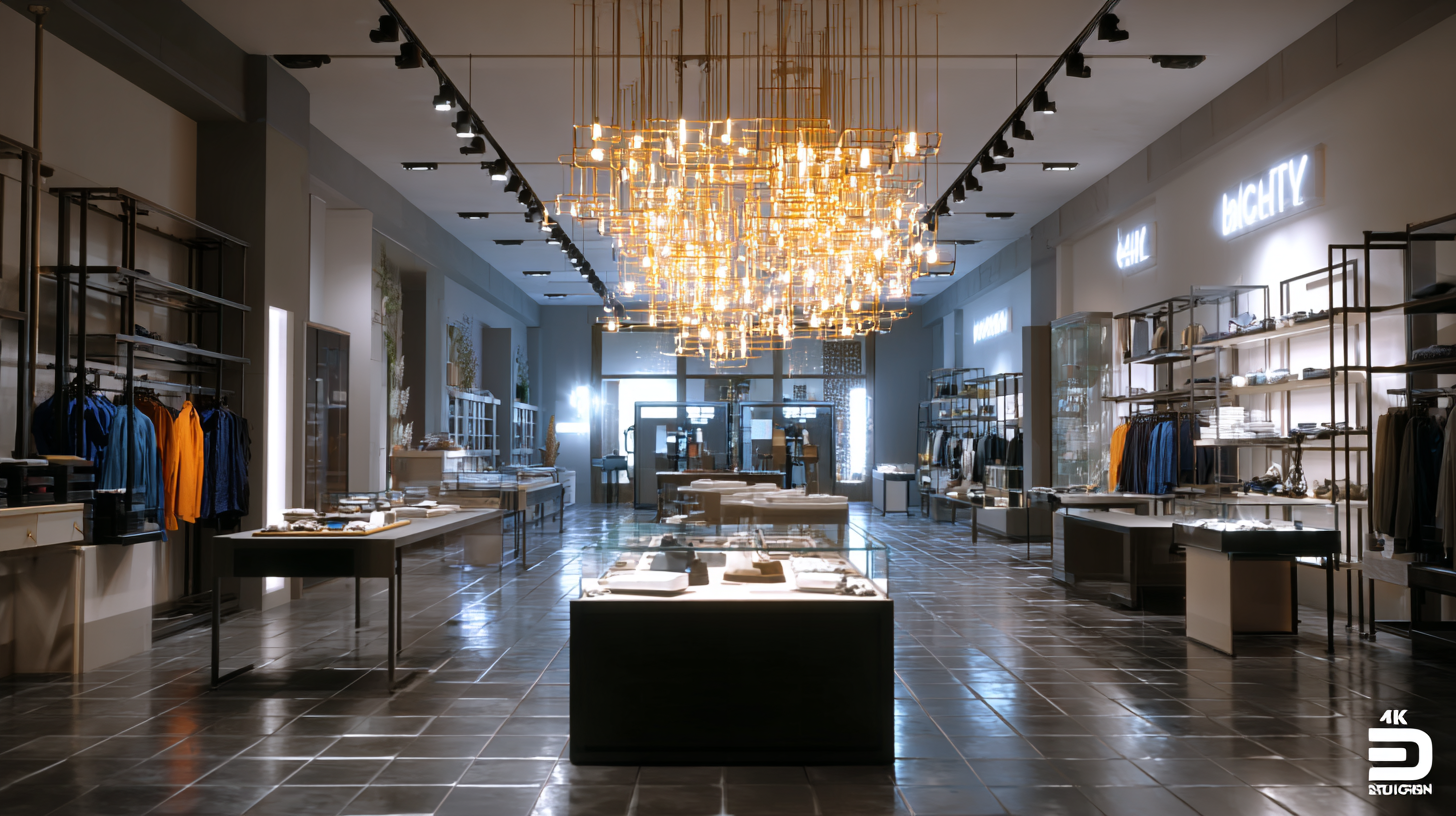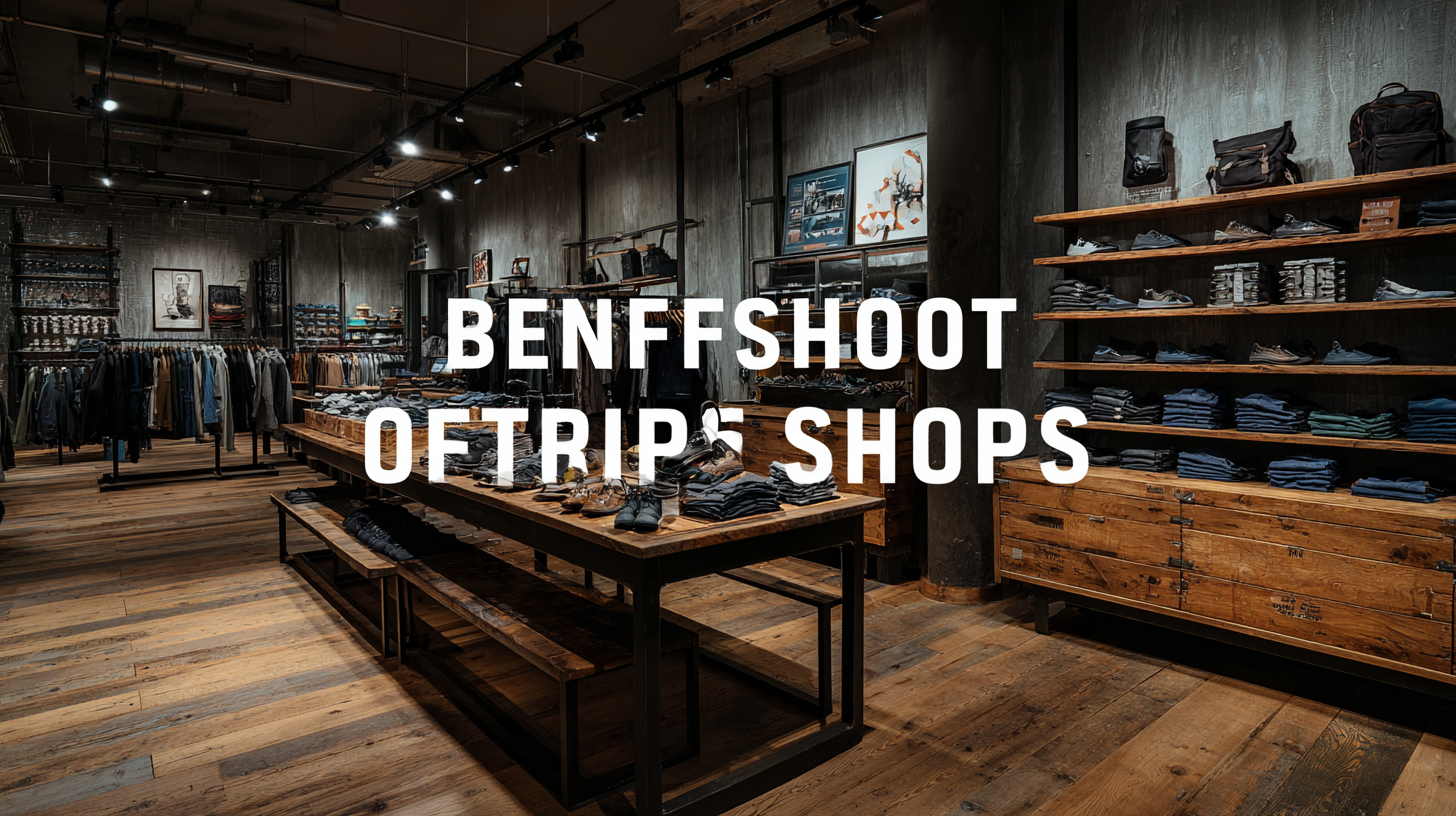Edison LED Lighting
Projects
Benefits of Optimal Shop Lighting for Enhanced Retail Success
Effective shop lighting is a critical element in retail spaces, playing a pivotal role in attracting customers and enhancing their shopping experience. According to a recent study by the Retail Industry Leaders Association, well-designed shop lighting can increase sales by up to 30%, as it influences how customers perceive products and the overall ambiance of the store. Additionally, a report from the International Council of Shopping Centers highlights that 60% of consumers are more likely to enter a store with effective lighting and 83% believe that it can positively impact their mood while shopping. This tutorial explores the benefits of optimal shop lighting, offering strategies to maximize its potential in driving retail success. By understanding the nuances of lighting design and its impact on consumer behavior, retailers can create an inviting atmosphere that encourages longer visits and increased purchases.

The Impact of Shop Lighting on Consumer Behavior and Mood
Shop lighting plays a pivotal role in shaping consumer behavior and mood within retail environments. The right lighting can create an inviting atmosphere, influencing how long customers stay in a store and their overall shopping experience. For instance, warm, soft lighting tends to evoke feelings of comfort and relaxation, encouraging consumers to explore products at leisure. In contrast, harsh, bright lighting can create a sense of urgency or discomfort, prompting quick visits rather than thoughtful purchases.
Additionally, the strategic use of lighting can highlight key products and promotions, guiding consumers' attention and enhancing their shopping journey. For example, accent lighting can draw focus to featured items, while ambient lighting establishes a cohesive and appealing store ambiance. This tailored approach not only boosts sales but also fosters a strong emotional connection between the brand and the consumer, ultimately enhancing retail success. By understanding the psychological impact of light in retail settings, store owners can optimize their lighting strategies to create a more engaging and memorable shopping experience.
Benefits of Optimal Shop Lighting for Enhanced Retail Success
This chart illustrates the impact of different lighting types on consumer behavior in retail environments. It showcases how various lighting conditions influence customer mood and purchasing decisions.
Strategies for Choosing the Right Lighting for Your Retail Space
When choosing the right lighting for your retail space, it's essential to consider the specific atmosphere you want to create. Lighting can significantly influence customer behavior, making it a critical element in enhancing the overall shopping experience. For instance, utilizing a mix of ambient, task, and accent lighting can help convey the desired mood while highlighting products effectively.
Tips: Begin by assessing your store layout and identifying key areas that need illumination. Adjusting light intensity can create focal points that draw attention to featured merchandise, guiding customers through your space. Additionally, consider the color temperature of your bulbs; warmer tones can create a welcoming feel, while cooler tones can energize and invigorate shoppers.
Moreover, integrating sensory elements like fragrance can complement your lighting strategy. The right scent can evoke emotions and influence spending, creating a cohesive experience that entices customers to explore further. By harmonizing lighting with scent and other sensory details, retailers can craft an alluring environment that fosters customer engagement and drives sales.
How to Use Lighting to Highlight Merchandise Effectively
Lighting is a critical element in retail environments that significantly influences customer behavior and purchasing decisions. According to a study by the Fortune 500 retailer, **Macy's**, optimal lighting can enhance product visibility and convey a certain mood or ambiance that resonates with shoppers. Research indicates that well-lit merchandise can increase sales by up to **30%**, showcasing the powerful impact of effective lighting strategies.
When utilizing lighting to highlight merchandise, retailers should consider various types such as accent, task, and ambient lighting. Accent lighting, for example, draws attention to specific products or displays, encouraging customers to engage with the items. Data from the **Retail Industry Leaders Association** suggests that 70% of purchasing decisions are made spontaneously, making the visual appeal created by strategic lighting essential. Additionally, brighter, warmer lighting can help create an inviting atmosphere, leading to longer dwell times in stores. Utilizing layered lighting techniques not only enhances product appeal but also enhances the overall shopping experience, driving retail success.
Benefits of Optimal Shop Lighting for Enhanced Retail Success
| Aspect | Benefits | Implementation Tips |
|---|---|---|
| Customer Engagement | Enhances attention, leading to longer browsing times. | Use accent lighting to draw attention to key products. |
| Product Highlighting | Makes merchandise more appealing and easier to see. | Utilize spotlights for featured items and displays. |
| Mood Creation | Sets the shopping experience and affects purchasing behavior. | Adjust lighting color temperature to match the desired ambiance. |
| Sales Increase | Can lead to higher sales conversion rates. | Incorporate task lighting in areas where decision-making occurs. |
| Energy Efficiency | Reduces operational costs and environmental impact. | Opt for LED lighting solutions that lower energy usage. |
Energy-Efficient Lighting Solutions for Sustainable Retail
In the competitive retail landscape, energy-efficient lighting solutions play a pivotal role in promoting sustainability while enhancing the shopping experience. By utilizing LED and other energy-saving technologies, retailers can reduce their carbon footprint significantly. These lighting options not only consume less electricity but also have a longer lifespan compared to traditional bulbs. This reduction in energy use translates into lower utility bills, allowing retailers to allocate resources more effectively towards inventory or marketing initiatives.

Moreover, optimal shop lighting contributes to creating an inviting atmosphere that can influence consumer behavior. Bright, well-planned lighting can highlight products and create a sense of comfort, encouraging customers to spend more time in the store. By investing in energy-efficient lighting, retailers not only align with sustainable practices but also enhance their brand image. Shoppers are increasingly conscious of the environmental impact of their purchases; thus, showcasing a commitment to sustainability through energy-efficient lighting can attract more eco-minded consumers. This dual focus on efficiency and ambiance can pave the way for retail success in today's environmentally aware marketplace.
Creating a Cohesive Brand Identity Through Strategic Lighting Choices
 Strategic lighting choices play a crucial role in developing a cohesive
brand identity and enhancing the overall shopping experience. By carefully selecting the type of lighting, retailers can convey their brand's personality and values. For instance, warm lighting can create an inviting atmosphere, perfect for brands focused on comfort and relaxation. In contrast, bright, stark lighting may suit modern and minimalist brands, reflecting a more vibrant and energetic identity.
Strategic lighting choices play a crucial role in developing a cohesive
brand identity and enhancing the overall shopping experience. By carefully selecting the type of lighting, retailers can convey their brand's personality and values. For instance, warm lighting can create an inviting atmosphere, perfect for brands focused on comfort and relaxation. In contrast, bright, stark lighting may suit modern and minimalist brands, reflecting a more vibrant and energetic identity.
Tip: Consider the emotional response that different lighting styles evoke. Use warm hues in areas where customers are encouraged to stay longer, such as lounges or fitting rooms, fostering a sense of comfort. On the other hand, utilize cooler tones in product displays to highlight details and features, enhancing the shopping experience.
Additionally, using lighting to highlight specific products or areas within the store can guide customers’ attention effectively. By incorporating accent lighting, you can create focal points that align with your brand message, successfully drawing customers to key items.
Tip: Incorporate fixtures that can be adjusted in intensity. This flexibility allows for changes in ambiance depending on the time of day or special events, ensuring your store's atmosphere consistently reflects the tone of your brand and keeps customers engaged.
